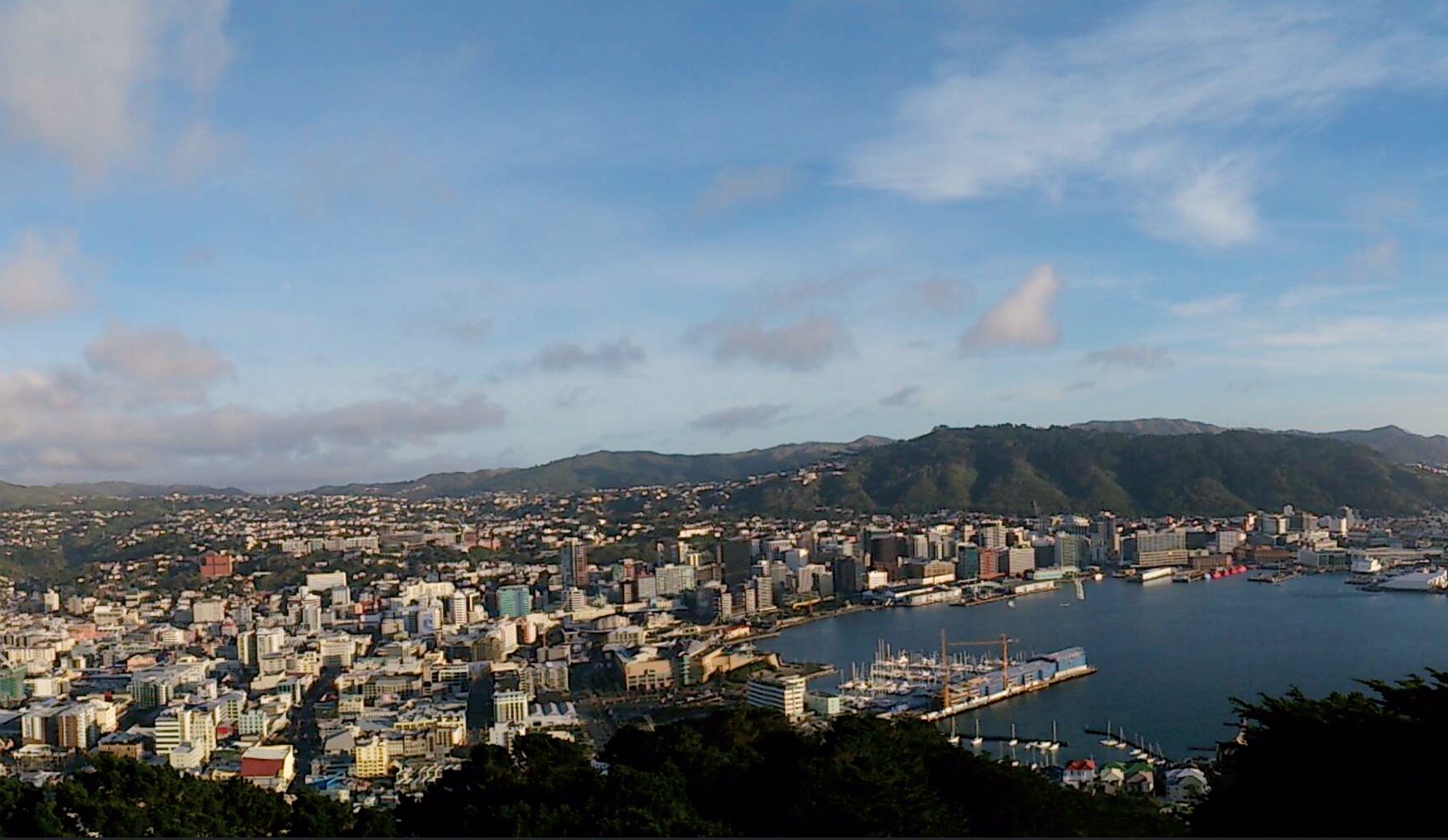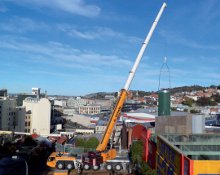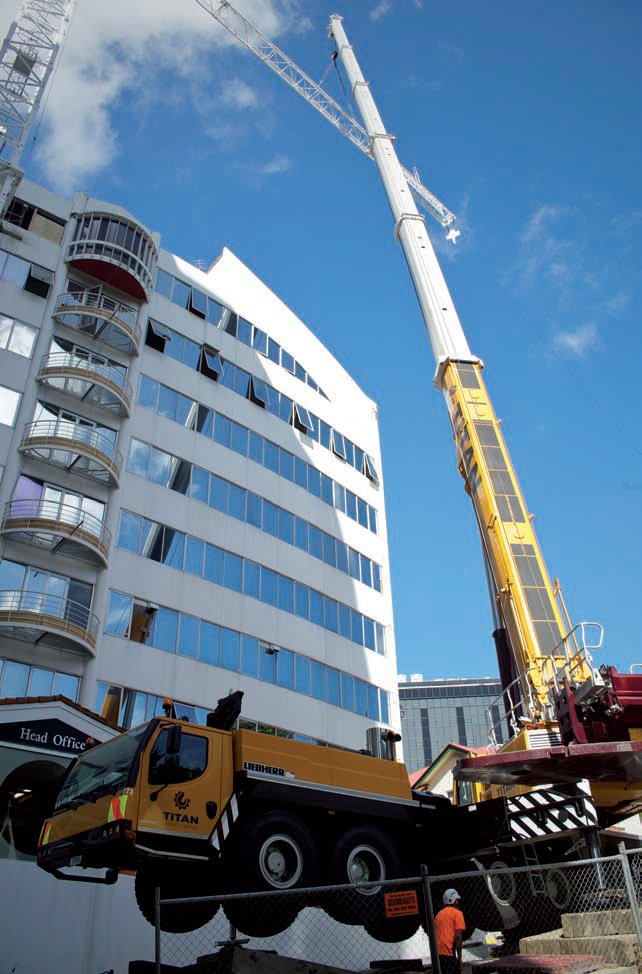Land of the long white cloud
11 October 2013With a market dominated by secondhand and often smaller machines, New Zealand is often overlooked, but the country plays a leading role in training, and shows how geography can shape a lifting industry. Zak Garner-Purkis visited the local trade association's AGM in Napier, and job sites across the country.
Certain countries are influenced more by geography than others. For those in the world's incredibly developed and densely populated metropolises it's easy to slip into a mindset that there are few natural obstacles that cannot be bypassed by human ingenuity.
However there are many places on the planet where such a notion is not only ignorant, but dangerously naive. New Zealand is one place where it is impossible to escape the power that nature holds over humankind, a land where natural disaster and large wilderness demand consideration by any business operating in the country.
Like many sectors in New Zealand, the country's lifting industry has been shaped by the its landscape and relative isolation. This separation from other markets and the geographical challenges posed to businesses makes the country a fascinating case study.
"The crane companies reflect the island's themselves, there are only four million people on an island the size of the UK, the country is made up of a number of smaller companies spread across several regions", says Robert Carden, director of Tidd Ross Todd (TRT) "In New Zealand you don't get the long term contracts of six months and 12 months or the big deals that you get in other places, it's a market dominated by taxi crane work. The mileage in New Zealand is also far less because the market is more regional. This means it takes longer for cranes to wear out."
These factors shape the investments in equipment made by local crane firms who value longevity and versatility in equal measure. Machines with a variety of accessories and configurations are popular, as are cranes carrying the names of established European manufacturers. Titan Cranes' general manager Vaughan Clark explains: "Having a trusted name is very important, because machines need to maintain their value.
"German brands lead the market through their quality, whilst Chinese manufacturers are yet to make an impact in the market. Japanese brands have been popular, but their sales have been dropping with the popularity of European all terrains. I would say there is a fairly even split between the three major brands.
"As an isolated market we often have one machine doing multiple tasks. Customers tend to be looking for a good all rounder. The number of configurations and axle space is important. Some machines that would be successful elsewhere aren't as popular here. There has been a market trend towards all terrains, as the road user charges we have in New Zealand penalise certain axle spacings and axle weights. New rule changes have taken away the advantages the truck cranes have had on travel costs. All terrains offer a great deal of maneuverability and versatility, although there is still a place in the market for truck cranes. In terms of capacity it has been in the 50t-100t all terrains that we have seen the most growth. Generally, across all the segments machines are getting bigger."
One of the major developments in New Zealand has certainly been the growth of the all terrain market, in part a result of the country's road user charges. New Zealand's road network is vast and expensive to maintain. According to the NZ Transport Agency the length of road per person in New Zealand is one of the highest in the world. The way the charges are calculated mean that it can sometimes be the case that higher capacity machines are cheaper to run than smaller machines because of their axle loadings.
In a country where the distance between townships can sometimes be as far as 70 miles, road charges are a significant factor. Glen Banks, manager of Banks Engineering says that his firm's decided to purchase a 100t Tadano Faun all terrain partly for these reasons: "We recently bought a new 100t all terrains. The crane completed its first job and hasn't stopped working since. The machines lightness on the road is a major advantage. It is cheaper to run than a 50t even though the crane has more capacity. This widens the scope for the different areas we are able to use it."
"We make decision's on cranes based on price, availability and condition. We don't have a favourite manufacturer, itis about the best machine at the right time. We have one Liebherr crane, the rest of the fleet are Japanese made: we have two Komatsu's, a Hitachi Sumitomo, and a Kobelco.
"In New Zealand we are always looking for better ways to do things, for less money and with a reduced effect on the environment. It's important to go to the customer and plan work in advance, offer advice on how we intend on working with them.
"One advantage we have is that we have is that we are an engineering company, as well as being a rental firm, which gives us flexibility. Our staff are versatile too, as 70-80% are steel welders who have been trained as crane operators. They can perform different tasks depending on what work is available."
Being flexible is vital in New Zealand. The country may be an island, oceans distant from much of rest of the world, but it is in way means isolated from international economic waves. The country is edging out of a downturn following the global financial crisis, with the nation's lifting industry counting more than a few losses as a result.
Bill Houlker, general manager of Morrow Equipment, believes that the economic pressure is as vicious as anywhere in the world: "It's a very hard market, violently cyclic, with good years and bad. In the good years everyone has a go, and some end up going broke. It can be difficult to get anything big happening here and the market tends to follow what people are investing in".
"[At Morrow] we have tower cranes and marine cranes: when one sector cools, the other can pick it up. Construction is near the bottom, everyone is still waiting on the Christchurch project but it hasn't happened yet, Auckland has started some construction, there is the odd project elsewhere. The bottom has been and gone it should get better hopefully this is the start of the recovery."
Robert Carden of TRT is also seeing the market rebuilding following a major dip: "At the moment, as market conditions improves, it's become a lot more regional. In Christchuch there is still the redevelopment to come, in Auckland there are several infrastructure projects. There is a problem with the rental firms not receiving the rates that they had been."
Long term vision is of paramount importance in a market where excess machinery cannot be easily exported. Although secondhand crane buyers from regions such as the Middle East do come to New Zealand to purchase cranes it is important to invest in machines that will last.
Carden says: "We have a high quality attitude towards cranes. The country has a good market for high spec machines and we only deal in the top end. We see ourselves as a price maker rather than a price taker. Those that would rather compromise on this basis have gone elsewhere. In New Zealand there is an expectation of aftersales too. The demands from customers regarding new equipment has been on a steady rise".
Clearly these attitudes are not unique to New Zealand: in many other places around the world crane companies focus on flexibility and longevity as well. But seeing a market formed by the geography of the country enforces why these principles are so important. New Zealand presents a clear vision of how the crane business works in its most basic form, not overfed by a constant flow of infrastructure projects or economic speculation.
UP THERE WITH THE BEST
Traditionally New Zealand has been a frontrunner when it comes to operator training. The country has in the past shown the way to other larger nations in regards to its certification programmes.
This continues to be the case with new schemes being conceived regularly to keep up with changing technology and techniques. The Crane Association of New Zealand (CANZ) has played a major role in the creation and maintenance of these high standards, which are also a result of enthusiasm from within the industry itself.
"Training in New Zealand is something we can be proud of. Our fleets may not be the most modern in the world, although they aren't the least either, but when it comes to training I believe we're up there with the best," says Grant Moffat president of CANZ and plant manager at HEB Structures, "If I'm not training someone to do my job then I'm not doing my job properly, that attitude is what we want to promote. It's not about job security, it's about bringing people through for the good of the business.
"We want to create leaders in the industry. The dream would be to be able to bring in someone from school and have them progress in the crane industry with qualifications that support their career path. We have some very passionate members who are enthusiastic about making this happen."
A small country with a significant number of young wellqualified individuals is always vulnerable to having its emerging talent hovered up by larger wealthier nations.
But this is not something that deters Moffat or others in the industry, as Jason Dennison director of JD Rigging explains: "Australia takes a lot of qualified operators from New Zealand, but that isn't a problem which is restricted to the crane industry, it effects all fields. All you can do is maintain the right culture within New Zealand. You cannot alter the fact that some people will go abroad to seek other opportunities. Often people gain new experience in other countries, but then come back to New Zealand."
Grant Moffat continues: "Growing up in New Zealand you're aware that it is a small country, but you can't let this define your training procedures. Inevitably we lose a few welltrained individuals to other countries. Although, some of them do find that the grass isn't always greener. I believe that the New Zealand economy is starting to come back. There aren't as many people leaving as there have been."
As well as promoting training in New Zealand, CANZ goes a step further, producing a number of highly respected training materials for specific practical issues that are upgraded on a regular basis. The association recently announced that it is working alongside The Skills Organisation to rewrite its crane safety manual, a guide for operators, which, it says, is due an update. Moffat explains: "Our training programmes are something we're particular proud of, and these documents demonstrate the different techniques for using cranes.
"The materials demonstrate past practice and also improve on what is already being done. We can then say to the members that the training is out there, and it's now about the practical stage."
"It's about raising standards. The 'crane safety manual' is our bible in this respect. It's driven a lot of what the organisation does."
The association is always looking for new ways to promote good practice in this field and recently shifted the focus of its awards at its annual conference (held this year in Napier) to reflect that: "As part of our emphasis on training we introduced awards for best trainee, best trainer of the year and best training company. We've seen a great uptake from our members and the awards have been a good way for us to spread the message about training as well as rewarding the positive intiatives that has been going on."
The continued progress in this field is particularly impressive considering CANZ was delivered a major blow earlier in the year with the death of long time chief executive Ian Grooby. Although there were succession plans in place set to be enacted after the 2013 conference, Grant Moffat was forced to come to the helm of the organisation to ensure its smooth running until the appointment of current CEO Rod Auton. Establishing himself amongst the members in a far shorter period than he would ideally have sought to, Auton has displayed skills that will no doubt benefit the association for a long time.


